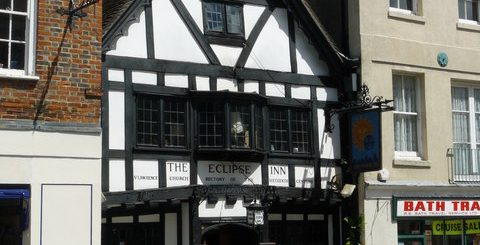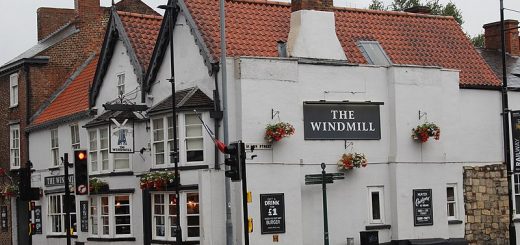Mary Ann “Polly” Nichols, Whitechapel Victim
In the early hours of 31st August 1888, the body of Mary Ann “Polly” Nichols nee Walker was discovered in a stable entrance on Buck’s Row (now Durward Street). Nichols was the first Whitechapel murder victim of the unidentified serial killer known as Jack the Ripper. It is said that Mary’s ghost haunts Durward Street and has apparently been seen lying where her body was discovered.
 Mary Ann Walker was born in Dawes Court, Shoe Lane on 26 August 1845. She married William Nichols on 16 January 1864 and together they had five children, Edward John Nichols (1866), Alice Esther Nichols (1870), Percy George Nichols (1868 – 1948), Eliza Sarah Nichols (1876), and Henry Alfred Nichols (1878). Their marriage broke down in 1880.
Mary Ann Walker was born in Dawes Court, Shoe Lane on 26 August 1845. She married William Nichols on 16 January 1864 and together they had five children, Edward John Nichols (1866), Alice Esther Nichols (1870), Percy George Nichols (1868 – 1948), Eliza Sarah Nichols (1876), and Henry Alfred Nichols (1878). Their marriage broke down in 1880.
Her parents were Edward and Caroline Walker. Mary ended up living with her father between 24th March and 21st May 1883 and they argued often over the amount she drank. She did seem to clean herself up when she entered a relationship with Thomas Drew, a blacksmith and when her brother died in 1886 and she attended his funeral she was described as being sober and looking respectfully dressed. However when this relationship ended, Polly seemed to struggle.
She was in Lambeth Workhouse (the marks of which were upon her petticoats) in early 1888 and then on 12th May took a job as a domestic servant for Samuel and Sarah Cowdry. Polly described the Cowdry’s as “teetotalers and religious” and left their service a month later, stealing clothes valued at three pounds and ten shillings. By August she was lodging at 18 Thawl Street in Whitechapel. On the morning of her death she returned to the lodgings from a local Thawl Street pub called The Frying Pan some time after 12.30am. However she did not have the money (four pence) to pay for a bed for the night and Mary Nichols went out on the street saying she would soon earn enough money for the nights bed. She intended to sell her body and thought that the new or bonnet she had would help attract a customer.
Charles Cross, a carter found Polly at around 3.40am lying in Bucks Row on her back, legs straight out and her skirts raised to her waist. Robert Pal another carter arrived shortly and unsure whether she was dead or not they decided to get back to work and inform a Policeman when they see one.
 The carters did not actually raise the alarm to the murder, this fell to Constable John Neil who discovered Mary and her horrific wounds that nearly decapitated her and the bonnet lying beside her.
The carters did not actually raise the alarm to the murder, this fell to Constable John Neil who discovered Mary and her horrific wounds that nearly decapitated her and the bonnet lying beside her.
The following testimony from the Inquest appeared in The Times newspaper and it clearly describes the terrible wounds that she suffered.
“Five teeth were missing, and there was a slight laceration of the tongue. There was a bruise running along the lower part of the jaw on the right side of the face. That might have been caused by a blow from a fist or pressure from a thumb. There was a circular bruise on the left side of the face which also might have been inflicted by the pressure of the fingers. On the left side of the neck, about 1in. below the jaw, there was an incision about 4in. in length, and ran from a point immediately below the ear. On the same side, but an inch below, and commencing about 1in. in front of it, was a circular incision, which terminated at a point about 3in. below the right jaw. That incision completely severed all the tissues down to the vertebrae. The large vessels of the neck on both sides were severed. The incision was about 8 inches in length. the cuts must have been caused by a long-bladed knife, moderately sharp, and used with great violence. No blood was found on the breast, either of the body or the clothes. There were no injuries about the body until just about the lower part of the abdomen. Two or three inches from the left side was a wound running in a jagged manner. The wound was a very deep one, and the tissues were cut through. There were several incisions running across the abdomen. There were three or four similar cuts running downwards, on the right side, all of which had been caused by a knife which had been used violently and downwards. The injuries were from left to right and might have been done by a left-handed person. All the injuries had been caused by the same instrument.”
She was buried a week later on 6 September 1888.
The Ghost:
There are a few stories relating the Whitechapel murder victims haunting the locations where they died though I have not yet been able to find an actual witness report.




Recent Comments